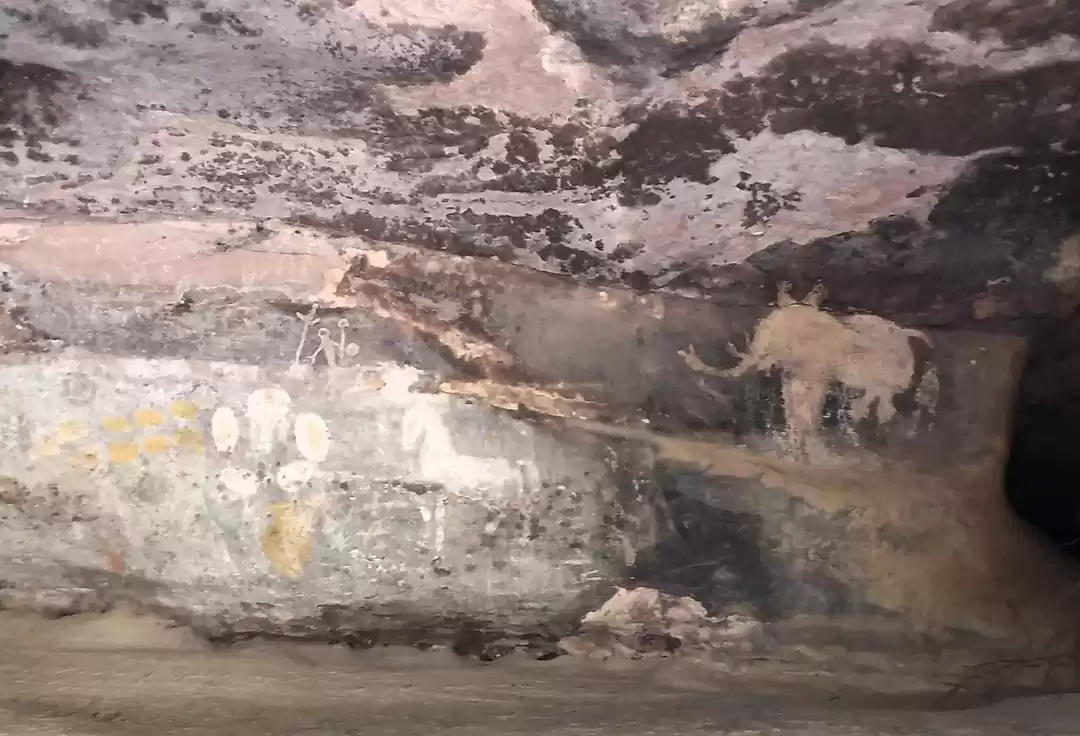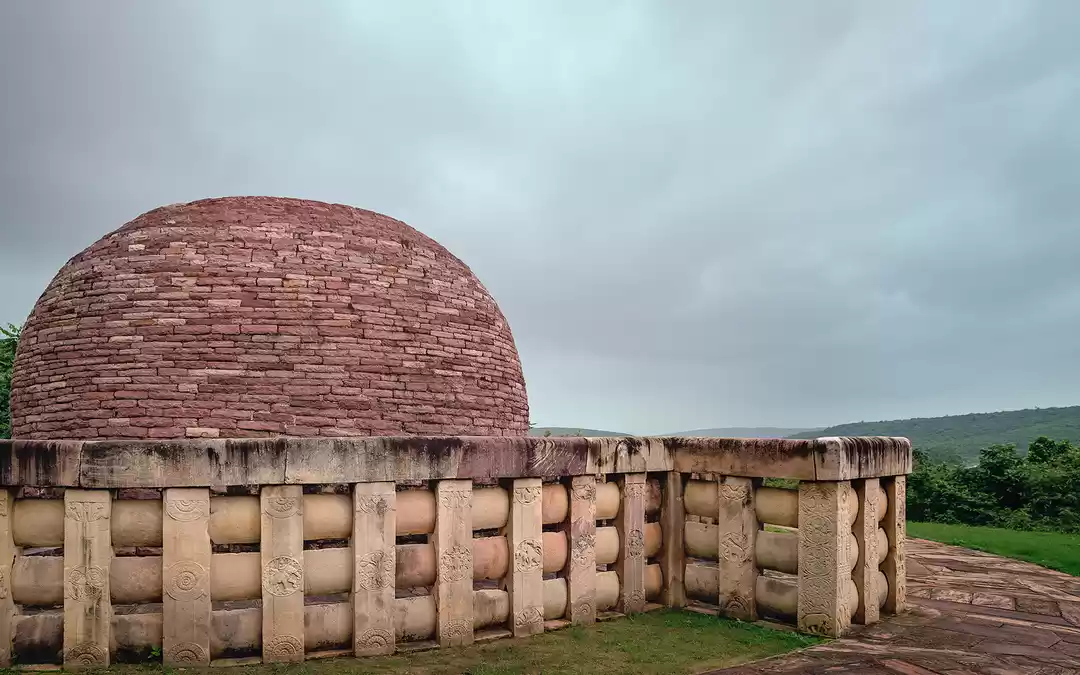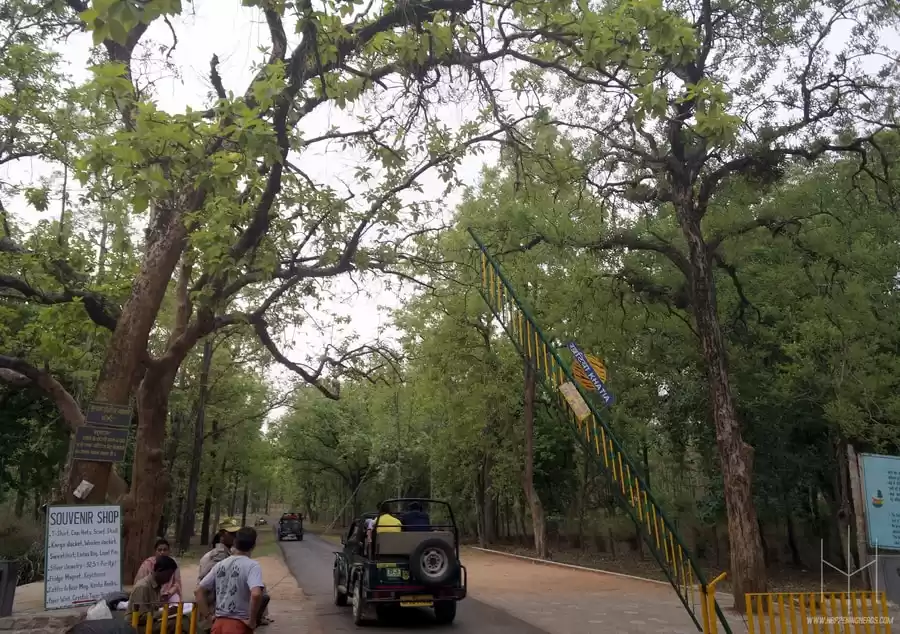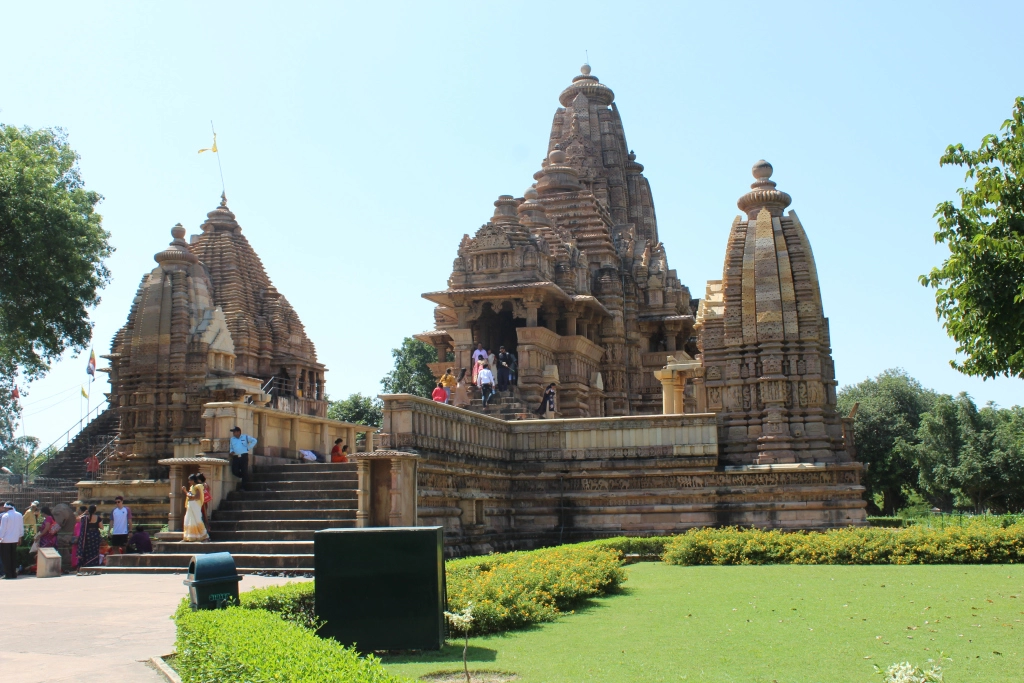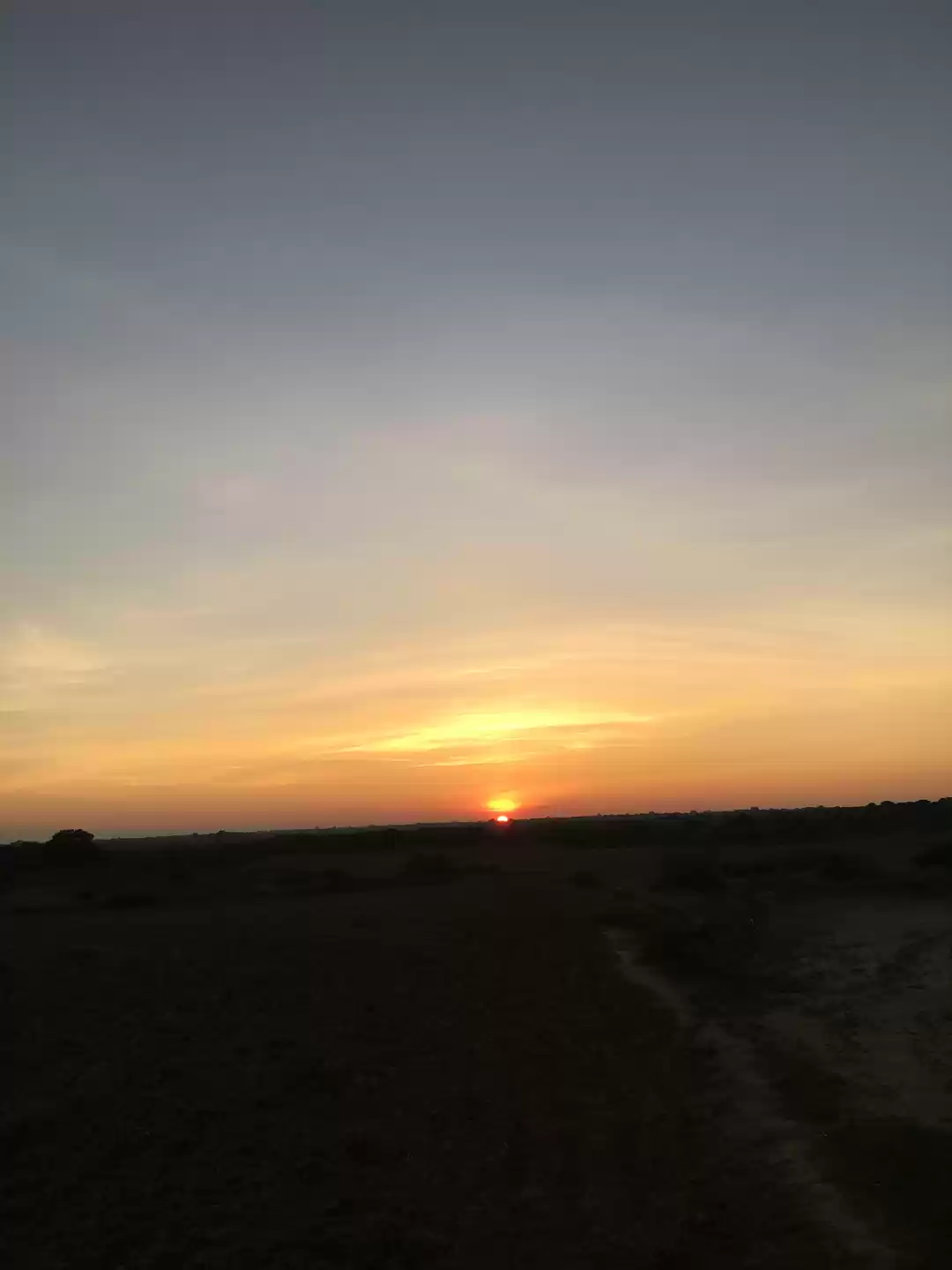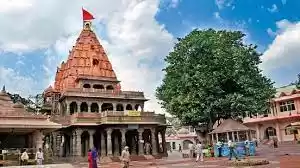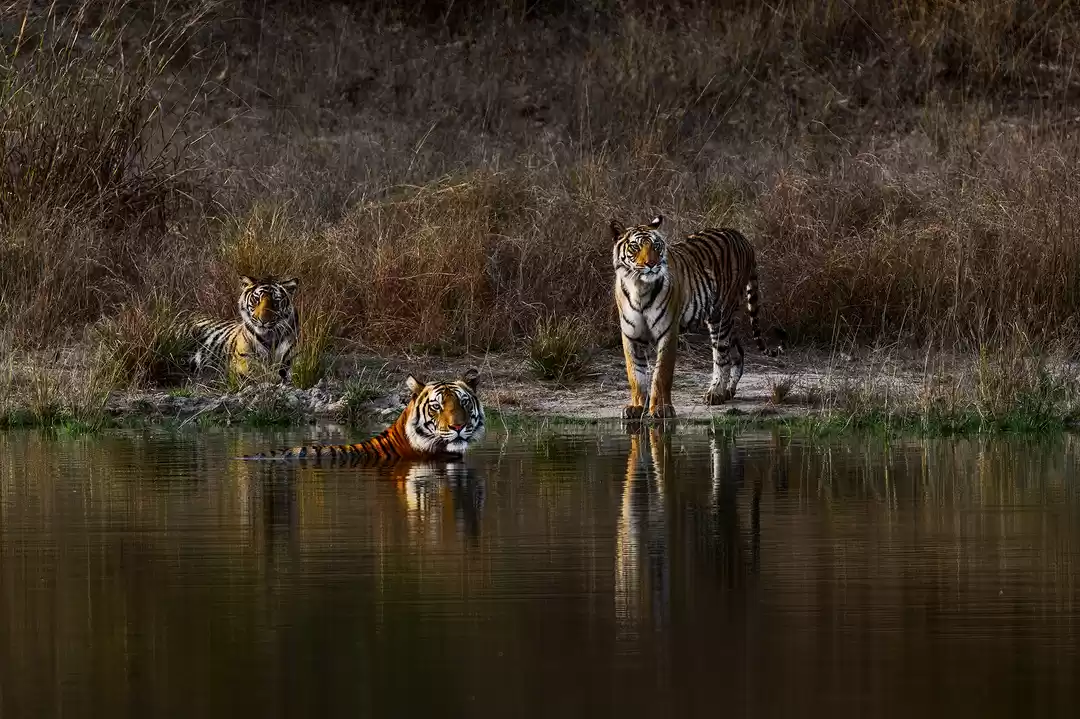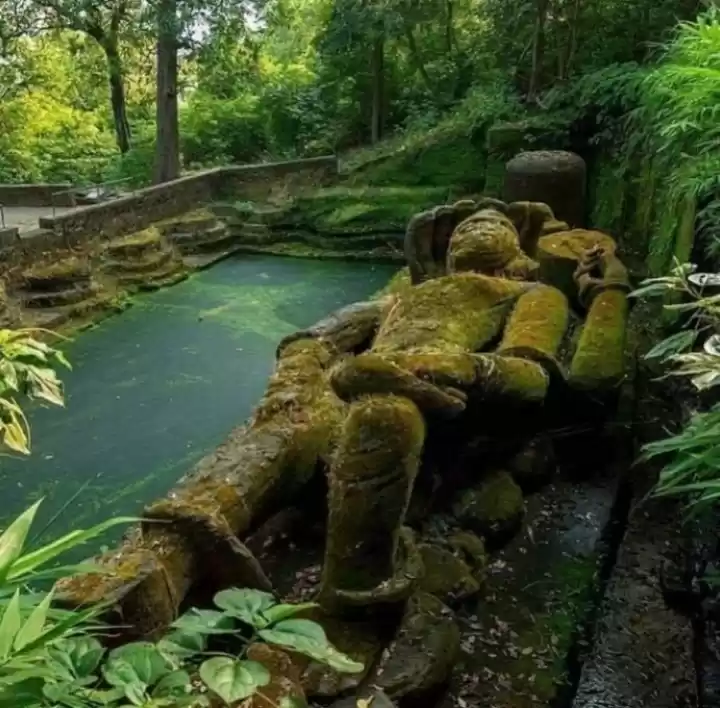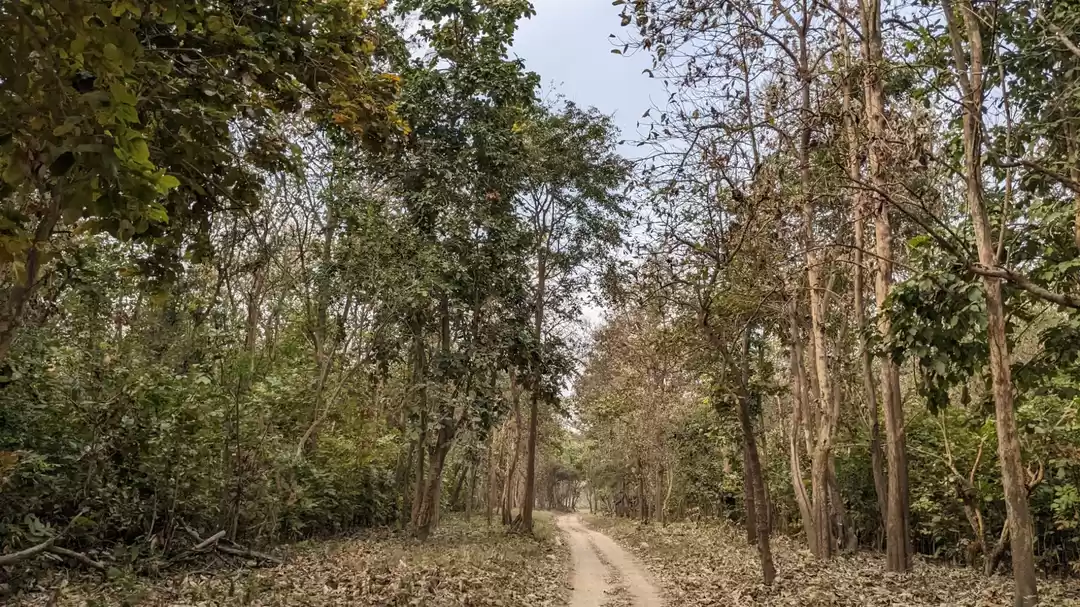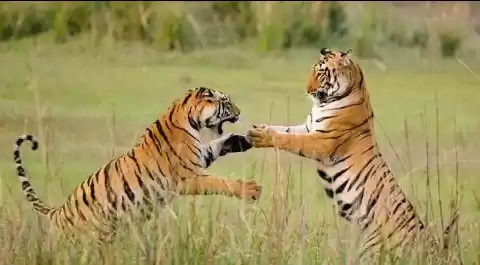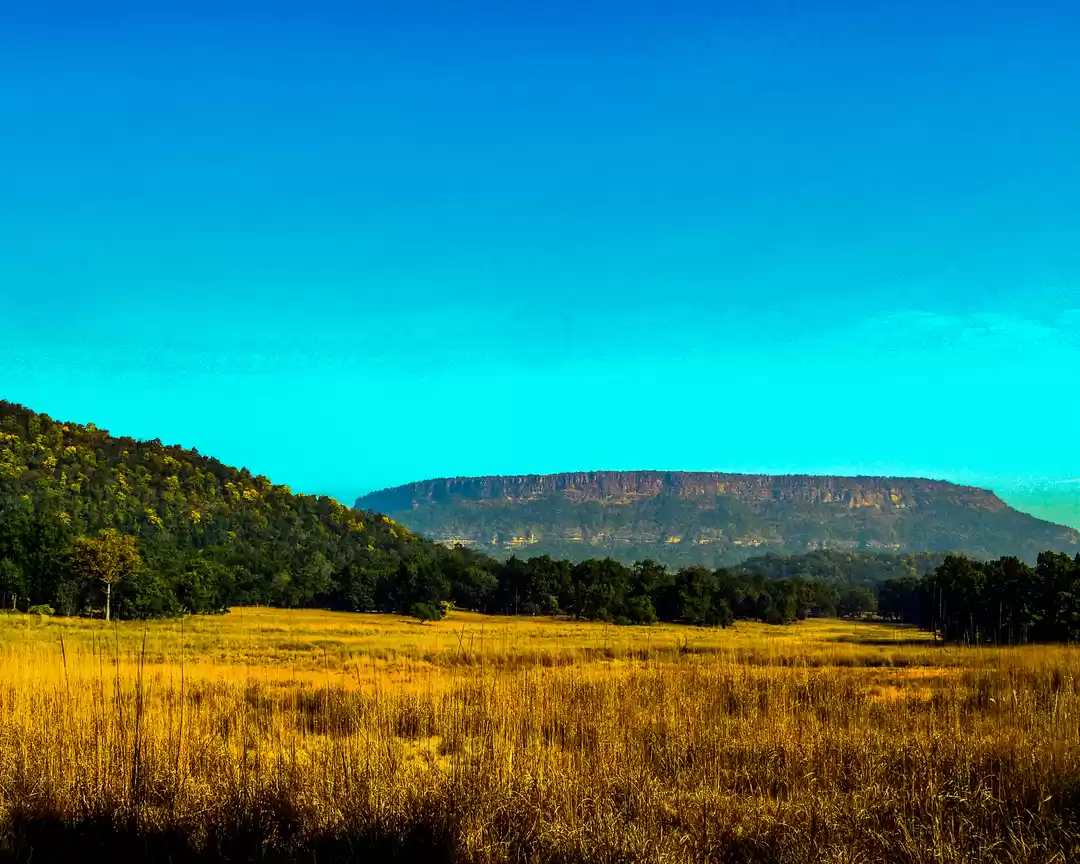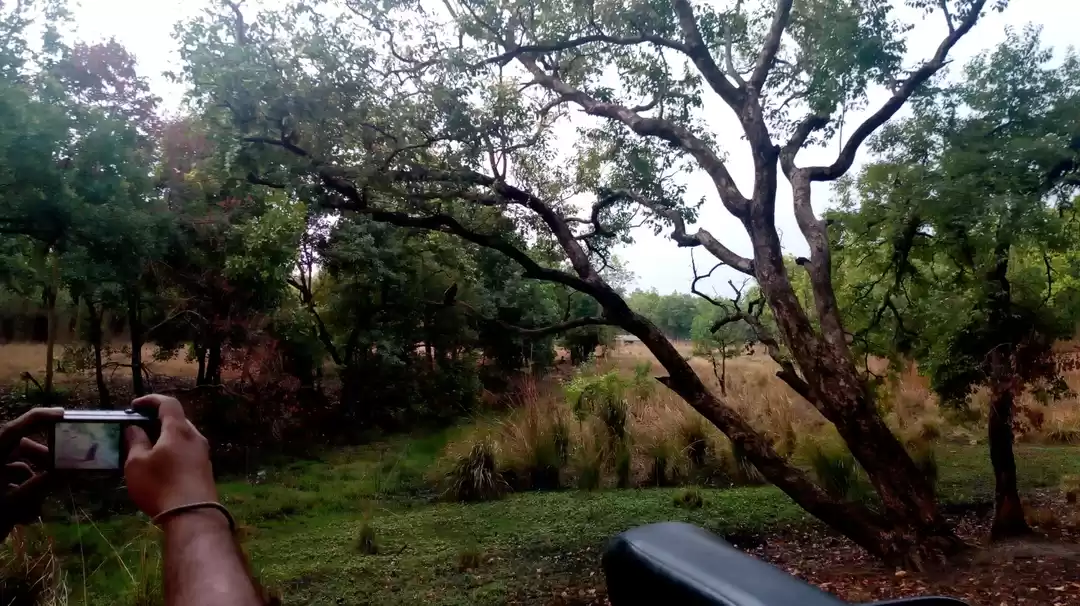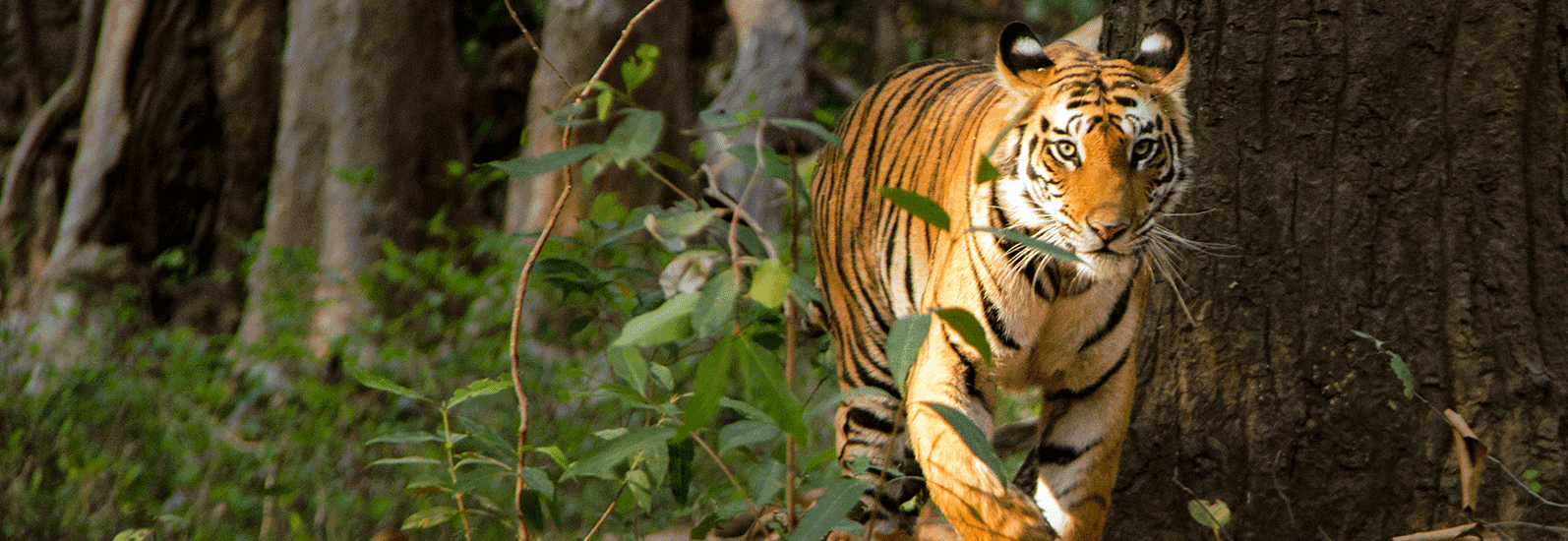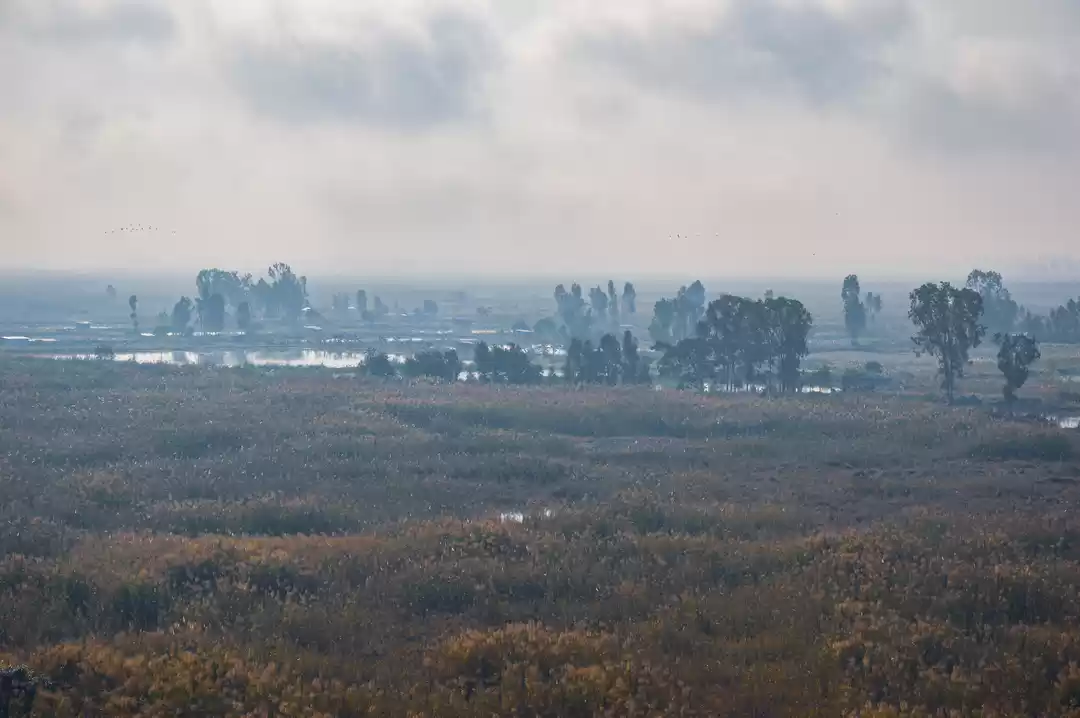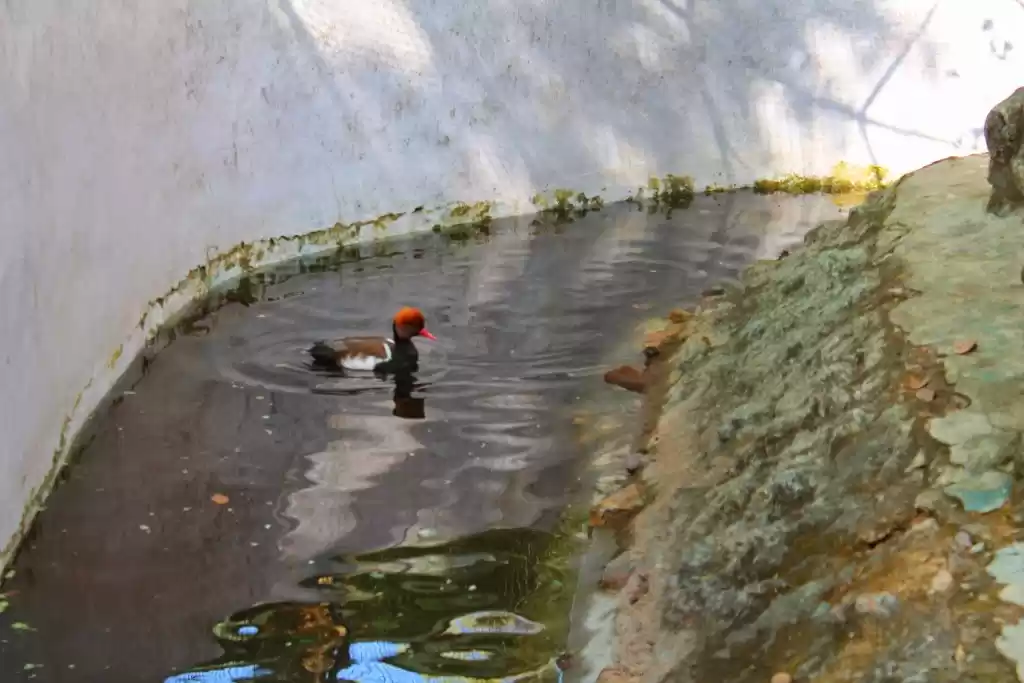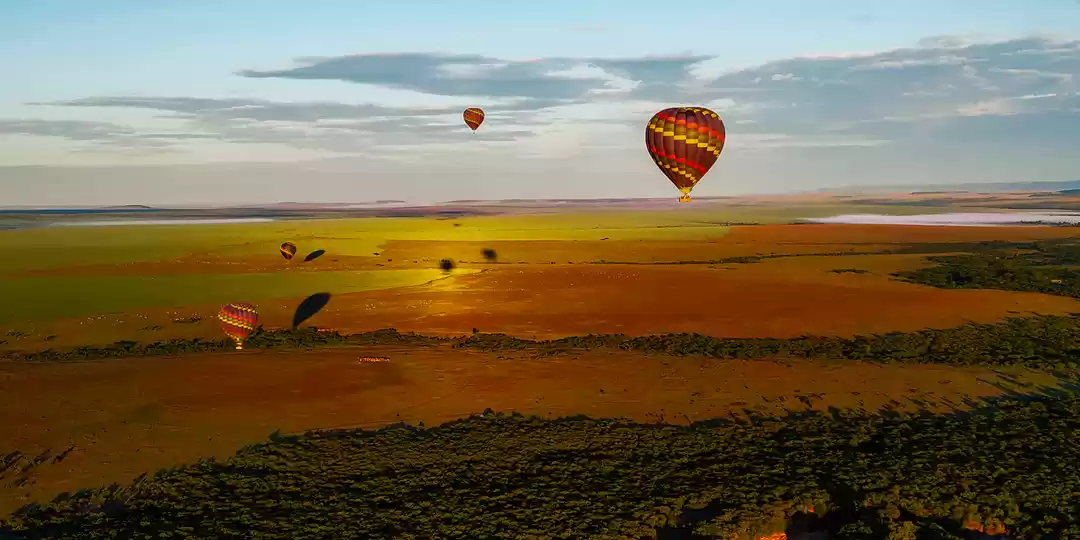If you are a wildlife enthusiast, there is no better place to visit than Bandhavgarh National Park. Located in the heart of Madhya Pradesh, this park is home to the highest density of tigers in India, as well as a variety of other animals and birds. Whether you want to witness the majestic roar of a tiger, spot a rare leopard, or admire the colorful plumage of a peacock, Bandhavgarh National Park has it all.
But Bandhavgarh National Park is not just about tigers. It is also a place of rich history, culture, and nature. The park derives its name from the ancient Bandhavgarh Fort, which dates back to the 3rd century BC and is said to have been gifted by Lord Rama to his brother Lakshmana. The fort is perched on a hilltop and offers a panoramic view of the surrounding forests and valleys. The park also boasts of some of the oldest rock paintings in India, dating back to the 1st century AD.
Bandhavgarh National Park is also a paradise for nature lovers, as it offers a range of activities and attractions that can be enjoyed in the pristine wilderness. You can go for a thrilling jeep safari, a serene elephant safari, a spectacular hot air balloon safari, or a relaxing bird watching session. You can also explore the nearby heritage sites, such as the Baghel Museum, the Shesh Shaiya statue, and the Bamera Dam. Or you can visit the local tribal villages and learn about their culture and lifestyle.
In this article, we will tell you everything you need to know about Bandhavgarh National Park, from how to plan your trip, what to expect from your safari, and what else to do and see in and around the park. We will also share some tips and tricks on how to make the most of your wildlife adventure, as well as some information that will benefit different types of travelers, such as families, solo travelers, couples, and groups. So, read on and get ready to experience the ultimate tiger paradise in India.

Why Visit Bandhavgarh National Park?
Bandhavgarh National Park is one of the most popular and sought-after wildlife destinations in India, and for good reasons. Here are some of the reasons why you should visit Bandhavgarh National Park:
See the Royal Bengal Tiger: Bandhavgarh National Park is the best place to see the Royal Bengal Tiger, the national animal of India and one of the most endangered species in the world. The park has a population of about 50 tigers, which is the highest in any park in India. The park also has a history of producing some of the most famous and legendary tigers, such as Sita, Charger, B1, B2, and Maharaja. These tigers have been featured in documentaries, books, and magazines, and have attracted thousands of tourists and photographers from across the globe. The park also has a high success rate of tiger sightings, as the tigers are habituated to human presence and often roam around the open meadows and grasslands. You can see the tigers from a close distance, and sometimes even witness them hunting, mating, or playing with their cubs.
Spot Other Wildlife Species: Bandhavgarh National Park is not only about tigers, but also about a variety of other wildlife species that can be seen in the park. The park is home to more than 40 species of mammals, 250 species of birds, and 80 species of butterflies. Some of the other animals that can be seen in the park are leopards, sloth bears, wild dogs, jackals, foxes, hyenas, jungle cats, civets, mongooses, nilgais, chitals, sambars, barking deer, chausinghas, gaur, wild boar, langurs, macaques, and rhesus monkeys. Some of the birds that can be seen in the park are vultures, eagles, hawks, falcons, owls, parakeets, kingfishers, bee-eaters, hornbills, barbets, woodpeckers, flycatchers, orioles, drongos, shrikes, babblers, warblers, and many more. Some of the butterflies that can be seen in the park are blue morpho, common mormon, common rose, common emigrant, common jezebel, peacock pansy, and many more.
Explore the Rich History and Culture: Bandhavgarh National Park is also a place of rich history and culture, as it has been a witness to many events and dynasties that have shaped the history of India. The park is named after the Bandhavgarh Fort, which is one of the oldest forts in India and is said to have been gifted by Lord Rama to his brother Lakshmana. The fort was the seat of power for many rulers, such as the Mauryans, the Vakatakas, the Kalachuris, the Baghels, and the Rewas. The fort is also associated with many legends and myths, such as the Ramayana, the Mahabharata, and the Naga cult. The fort is now a protected monument and can be visited by tourists with prior permission. The fort also houses some of the oldest rock paintings in India, dating back to the 1st century AD. These paintings depict scenes of hunting, dancing, fighting, and animals. The park also has many other historical and cultural attractions, such as the Baghel Museum, which displays the personal belongings of the Maharaja of Rewa, the Shesh Shaiya statue, which is a 35-foot-long statue of Lord Vishnu reclining on a seven-headed serpent, and the Bamera Dam, which is a scenic spot for picnics and boating.
Enjoy the Scenic Beauty and Nature: Bandhavgarh National Park is also a paradise for nature lovers, as it offers a range of activities and attractions that can be enjoyed in the pristine wilderness. You can go for a thrilling jeep safari, a serene elephant safari, a spectacular hot air balloon safari, or a relaxing bird watching session. You can also explore the nearby heritage sites, such as the Baghel Museum, the Shesh Shaiya statue, and the Bamera Dam. Or you can visit the local tribal villages and learn about their culture and lifestyle. The park also has a stunning landscape, with rolling hills, lush green forests, open meadows, rocky outcrops, and sparkling streams. The park also has a pleasant climate, with moderate temperatures and rainfall throughout the year.
How to Plan Your Trip to Bandhavgarh National Park?
If you are planning to visit Bandhavgarh National Park, here are some practical information and tips that will help you plan your trip:
When to Go: The best time to visit Bandhavgarh National Park is from October to June, when the weather is pleasant and the park is open for tourists. The park is closed from July to September, due to the monsoon season. The peak season is from December to February, when the temperature is cool and the chances of tiger sightings are high. The off-season is from March to June, when the temperature is hot and the vegetation is dry. However, this is also a good time to visit, as the animals come out to the waterholes and the crowd is less.
How to Get There: Bandhavgarh National Park is well-connected by road, rail, and air. The nearest airport is Jabalpur, which is about 190 km away from the park. You can take a flight from Delhi, Mumbai, or other major cities to Jabalpur, and then hire a taxi or a bus to reach the park. The nearest railway station is Umaria, which is about 35 km away from the park. You can take a train from Delhi, Mumbai, or other major cities to Umaria, and then hire a taxi or a bus to reach the park. The nearest bus station is Katni, which is about 100 km away from the park. You can take a bus from Jabalpur, Umaria, or other nearby towns to Katni, and then hire a taxi or a bus to reach the park. You can also drive your own car or bike to the park, as the roads are well-maintained and scenic.
Where to Stay: Bandhavgarh National Park has a variety of accommodation options, ranging from luxury resorts to budget hotels. You can choose from the following options, depending on your preference and budget:
Luxury Resorts: If you want to experience the ultimate comfort and luxury, you can stay at one of the luxury resorts in and around the park. These resorts offer spacious rooms, modern amenities, swimming pools, spas, restaurants, bars, and other facilities. Some of the luxury resorts are Taj Mahua Kothi, Samode Safari Lodge, Tree House Hideaway, Kings Lodge, and Bandhav Vilas.
Mid-Range Hotels: If you want to enjoy a comfortable and affordable stay, you can stay at one of the mid-range hotels in and around the park. These hotels offer cozy rooms, basic amenities, dining options,.
Budget Hotels: If you are looking for a cheap and cheerful stay, you can stay at one of the budget hotels in and around the park. These hotels offer basic rooms, essential amenities, and friendly service. Some of the budget hotels are Tiger Den Resort, Bandhavgarh Meadows, Aranyak Resort, and Wild Haven Resort.
What to Pack: Bandhavgarh National Park is a place where you need to pack smartly and sensibly, as you will be spending most of your time in the outdoors. Here are some of the things that you should pack for your trip:
Clothing: You should pack clothing that is comfortable, breathable, and suitable for the weather. You should also pack clothing that is in neutral colors, such as khaki, beige, or green, as they will help you blend in with the surroundings and avoid attracting unwanted attention from the animals. You should avoid wearing bright colors, such as red, yellow, or orange, as they will make you stand out and disturb the wildlife. You should also pack clothing that covers your arms and legs, as they will protect you from the sun, insects, and plants. You should also pack a hat, a scarf, a jacket, and a raincoat, depending on the season.
Footwear: You should pack footwear that is sturdy, comfortable, and suitable for walking on uneven terrain. You should avoid wearing sandals, flip-flops, or heels, as they will make you prone to injuries and infections. You should also pack socks, as they will keep your feet warm and prevent blisters.
Accessories: You should pack accessories that will enhance your wildlife experience and make your trip more enjoyable. You should pack a camera, a binocular, a flashlight, a water bottle, a sunscreen, a mosquito repellent, a first-aid kit, and some snacks. You should also pack a book, a journal, a pen, and some games, in case you get bored or want to relax.
Documents: You should pack documents that are necessary for your travel and stay, such as your passport, visa, ID card, booking confirmation, safari permit, and insurance. You should also pack some cash, as ATMs and card machines are not easily available in and around the park.
What to Expect from Your Tiger Safari at Bandhavgarh National Park?
A tiger safari at Bandhavgarh National Park is one of the most exciting and memorable experiences that you can have in your life. However, it is also important to know what to expect from your safari, so that you can prepare yourself accordingly and enjoy your safari to the fullest. Here are some of the things that you can expect from your tiger safari at Bandhavgarh National Park:
Duration: A tiger safari at Bandhavgarh National Park lasts for about three to four hours, depending on the season and the availability of the vehicles. The park offers two safari timings, one in the morning and one in the afternoon. The morning safari starts from 6 am to 11 am, and the afternoon safari starts from 3 pm to 6 pm. The timings may vary slightly depending on the sunrise and sunset. You can choose either one or both of the safari timings, depending on your preference and budget.
Mode of Transport: A tiger safari at Bandhavgarh National Park can be done in two modes of transport, a jeep or an elephant. A jeep safari is the most common and popular mode of transport, as it allows you to cover more ground and see more wildlife. A jeep safari can accommodate up to six people, excluding the driver and the guide. A jeep safari also gives you the option to choose from three different zones, Tala, Magadhi, and Khitauli, each with its own characteristics and attractions. A jeep safari also requires prior booking and a valid permit, which can be obtained online or through your hotel or tour operator. An elephant safari is a more exclusive and intimate mode of transport, as it allows you to get closer to the wildlife and see them from a different perspective. An elephant safari can accommodate up to four people, excluding the mahout and the guide. An elephant safari also gives you the option to go to the core area of the park, where the chances of seeing a tiger are higher. An elephant safari also requires prior booking and a valid permit, which can be obtained through your hotel or tour operator.

Zones
Bandhavgarh National Park is divided into three zones, Tala, Magadhi, and Khitauli, each with its own characteristics and attractions. You can choose one or more of the zones, depending on your preference and budget. Here is a brief description of each zone:
Tala Zone: Tala zone is the most popular and premium zone of the park, as it has the highest density of tigers and the best chances of tiger sightings. Tala zone is also the most scenic and diverse zone of the park, as it has a variety of landscapes, such as hills, valleys, meadows, grasslands, and water bodies. Tala zone is also the home of some of the most famous and legendary tigers, such as Sita, Charger, B1, B2, and Maharaja. Tala zone also has some of the most interesting and historical attractions, such as the Bandhavgarh Fort, the Shesh Shaiya statue, the Bamera Dam, and the ancient rock paintings. Tala zone is also the most expensive and exclusive zone of the park, as it has a limited number of vehicles and permits allowed per day. You need to book your safari and permit well in advance, as they get sold out quickly.
Magadhi Zone: Magadhi zone is the second most popular and preferred zone of the park, as it has a good density of tigers and a fair chance of tiger sightings. Magadhi zone is also a beautiful and diverse zone of the park, as it has a variety of landscapes, such as forests, grasslands, and water bodies. Magadhi zone is also the home of some of the most active and playful tigers, such as Rajbehra, Mahaman, and Chorbehra. Magadhi zone also has some of the most attractive and natural attractions, such as the Gopalpur Pond, the Chakradhara Meadow, and the Sidhbaba Temple. Magadhi zone is also a moderately priced and accessible zone of the park, as it has a reasonable number of vehicles and permits allowed per day. You need to book your safari and permit in advance, as they get booked fast.
Khitauli Zone: Khitauli zone is the least popular and visited zone of the park, as it has a low density of tigers and a rare chance of tiger sightings. Khitauli zone is also a remote and rugged zone of the park, as it has a hilly and rocky terrain. Khitauli zone is also the home of some of the most elusive and shy tigers, such as Kankati, Bheem, and Mirchani. Khitauli zone also has some of the most peaceful and serene attractions, such as the Andheyari Jhiria, the Ghoda Dam, and the Sita Mandap. Khitauli zone is also the cheapest and easiest zone of the park, as it has a low number of vehicles and permits allowed per day. You can book your safari and permit on the spot, as they are usually available.
Guides: A tiger safari at Bandhavgarh National Park is incomplete without a guide, who will accompany you throughout your safari and provide you with valuable information and insights about the park and its wildlife. A guide is a trained and experienced professional, who knows the park and its animals like the back of his hand. A guide will help you spot and identify the wildlife, tell you stories and facts about them, and answer your questions and queries. A guide will also ensure your safety and comfort, and follow the rules and regulations of the park. A guide is usually assigned to you by the park authorities or your hotel or tour operator, and you need to pay a nominal fee for his services. A guide is also expected to receive a tip from you at the end of your safari, as a gesture of appreciation and gratitude.
Rules:
A tiger safari at Bandhavgarh National Park is a privilege and a responsibility, and you need to follow some rules and regulations to ensure the well-being of the park and its wildlife. Here are some of the rules that you need to follow during your safari:
Do not litter: You should not litter or throw any garbage or waste in the park, as it will pollute the environment and harm the animals. You should carry a bag or a bin to collect your trash and dispose of it properly outside the park.
Do not feed or touch the animals: You should not feed or touch the animals, as it will disturb their natural behavior and diet, and expose them to diseases and infections. You should also not tease or provoke the animals, as it will agitate them and endanger your life.
Do not make noise or use flash: You should not make noise or use flash, as it will scare and stress the animals, and affect their normal activities. You should also not play music or use mobile phones, as it will interfere with the sounds of nature and the signals of the animals.
Do not get off the vehicle or walk around: You should not get off the vehicle or walk around, as it will violate the rules of the park and put you at risk of attacks from the animals. You should also not lean out of the vehicle or stand on the seats, as it will make you unstable and vulnerable.
Do not smoke or drink: You should not smoke or drink in the park, as it will harm your health and the environment. You should also not carry any flammable or intoxicating substances, as they are prohibited and punishable by law.
Do not exceed the speed limit or overtake: You should not exceed the speed limit or overtake other vehicles, as it will endanger your safety and the safety of others. You should also follow the instructions of your driver and guide, and respect the rights of way of the animals.
What Else to Do and See at Bandhavgarh National Park?
Bandhavgarh National Park is not only a place to see tigers, but also a place to enjoy a variety of other activities and attractions that can make your trip more fun and memorable. Here are some of the things that you can do and see at Bandhavgarh National Park, apart from your tiger safari:
Bird Watching: Bandhavgarh National Park is a haven for bird lovers, as it has more than 250 species of birds, both resident and migratory. You can see a wide range of birds, such as vultures, eagles, hawks, falcons, owls, parakeets, kingfishers, bee-eaters, hornbills, barbets, woodpeckers, flycatchers, orioles, drongos, shrikes, babblers, warblers, and many more. You can also see some rare and endangered birds, such as the lesser adjutant stork, the black-headed oriole, the Malabar pied hornbill, and the red-headed vulture. You can go for a bird watching session with your guide, who will help you spot and identify the birds, and tell you about their habits and habitats. You can also carry a bird book and a binocular, to enhance your bird watching experience.
Hot Air Balloon Safari: Bandhavgarh National Park is one of the few places in India where you can enjoy a hot air balloon safari, which is a unique and exhilarating way to see the park and its wildlife from a bird's eye view. You can go for a hot air balloon safari in the early morning or evening, when the weather is calm and clear. You can see the park and its surroundings from a height of about 500 feet, and admire the scenic beauty and diversity of the landscape. You can also see the wildlife from a safe distance, and sometimes even spot a tiger or a leopard. You can also see the Bandhavgarh Fort and the ancient rock paintings from a different perspective. You can also enjoy the sunrise or sunset, and capture some amazing photos and videos. You can book your hot air balloon safari through your hotel or tour operator, and pay a reasonable fee for the service.
Heritage Sightseeing: Bandhavgarh National Park is also a place of rich history and culture, and you can explore some of the heritage sites that are located in and around the park. You can visit the Bandhavgarh Fort, which is one of the oldest forts in India and is said to have been gifted by Lord Rama to his brother Lakshmana. You can see the fort and its ruins, such as the temples, the palaces, the gates, and the walls. You can also see the ancient rock paintings, which depict scenes of hunting, dancing, fighting, and animals. You can also visit the Baghel Museum, which displays the personal belongings of the Maharaja of Rewa, such as his hunting trophies, weapons, photographs, and furniture. You can also visit the Shesh Shaiya statue, which is a 35-foot-long statue of Lord Vishnu reclining on a seven-headed serpent. You can also visit the Bamera Dam, which is a scenic spot for picnics and boating.
Tribal Village Tours: Bandhavgarh National Park is also a place where you can learn about the local tribal culture and lifestyle, by visiting some of the tribal villages that are located near the park. You can visit the villages of the Baiga and the Gond tribes, who are the indigenous people of the region and have a unique and colorful culture. You can see their houses, their clothes, their ornaments, their utensils, and their crafts. You can also interact with them, and learn about their traditions, beliefs, rituals, and festivals. You can also participate in their activities, such as dancing, singing, cooking, and farming. You can also buy some of their handicrafts, such as pottery, baskets, paintings, and masks, as souvenirs. You can book your tribal village tour through your hotel or tour operator, and pay a nominal fee for the service.
Conclusion
Bandhavgarh National Park is a place that will leave you spellbound and speechless, as it offers you a chance to see the magnificent tigers and other wildlife in their natural habitat, and also to explore the rich history, culture, and nature of the region. It is a place that will make you fall in love with wildlife and nature, and also with yourself. It is a place that will give you memories and experiences that you will cherish for a lifetime.
So, what are you waiting for? Book your trip to Bandhavgarh National Park today, and get ready to experience the ultimate tiger paradise in India.


























